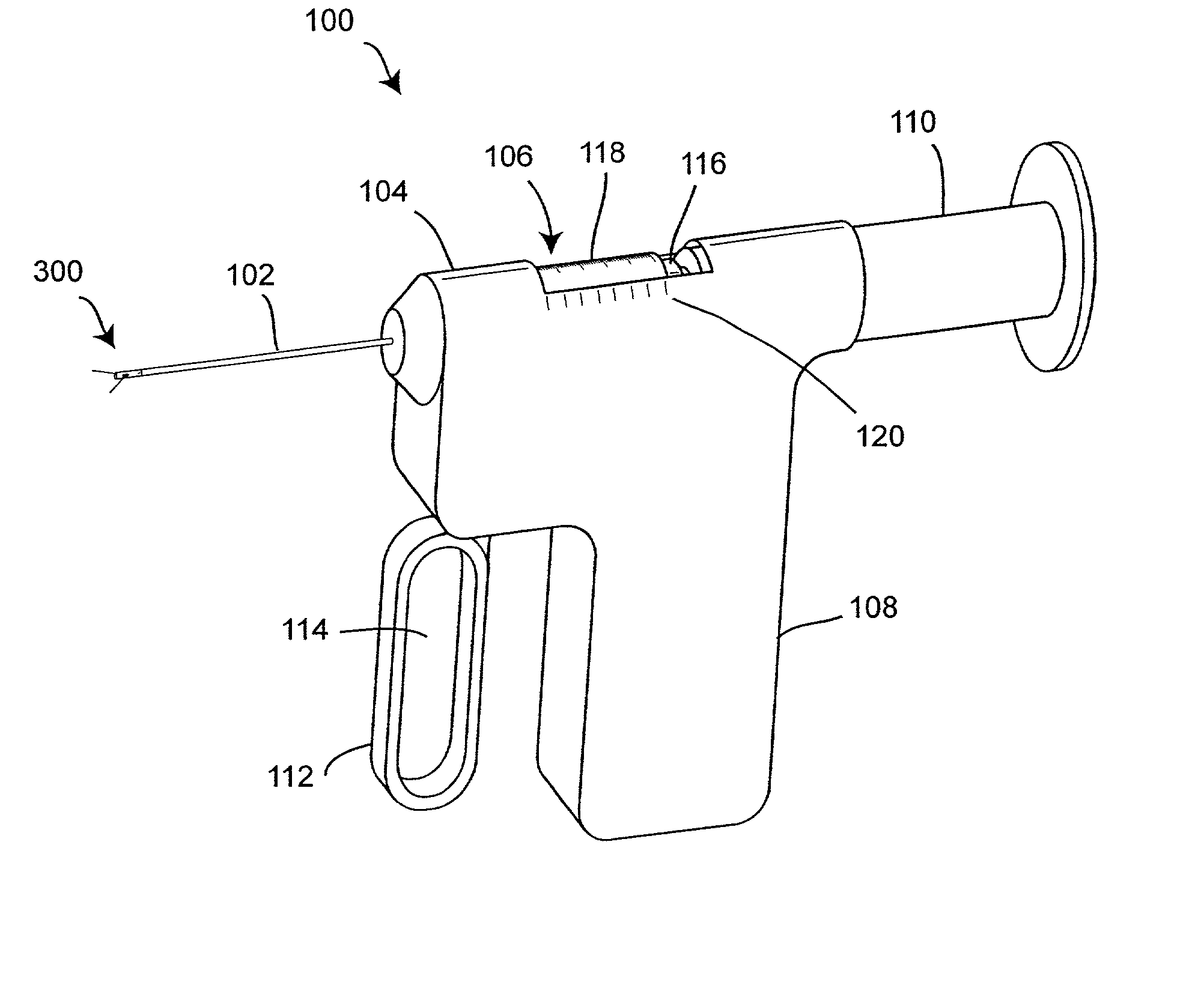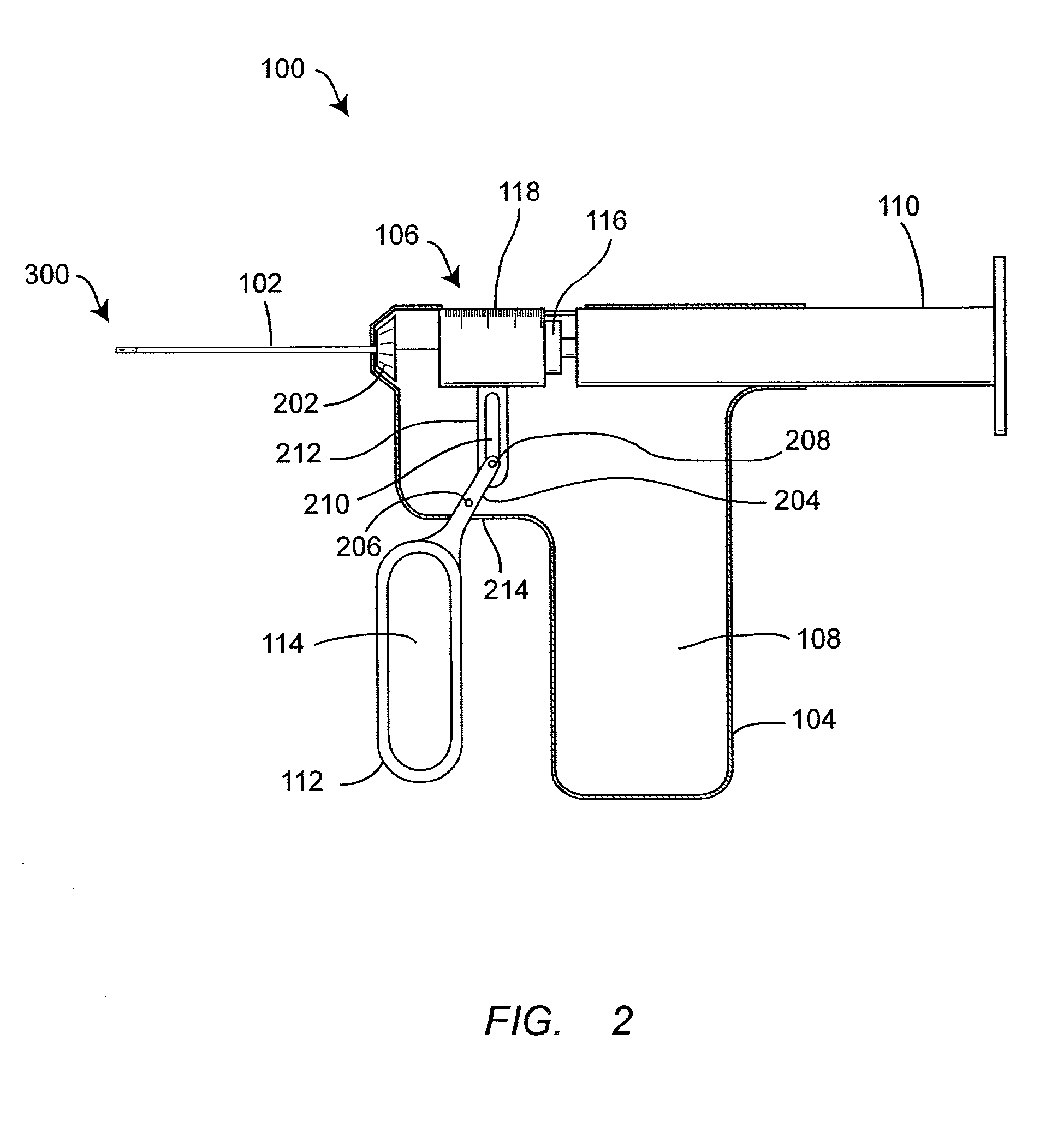Fluid delivery and extraction device and method
a technology of extraction device and fluid, which is applied in the field of medical devices, can solve the problems of complex and perhaps life-threatening surgeries, trauma and tissue damage to the patient, and the restlessness of angioplasty patients
- Summary
- Abstract
- Description
- Claims
- Application Information
AI Technical Summary
Problems solved by technology
Method used
Image
Examples
Embodiment Construction
[0032] As shown in FIG. 1, an embodiment of a fluid delivery and extraction device 100 comprises a distal portion 300, a shaft 102, a main body 104, a window slot 106, a syringe 116, a luer connector 118, a plunger 110, a handle 108, a trigger actuator 112, a finger aperture 114, and a calibrated index 120. The shaft 102 is preferably flexible to allow it to bend when advanced through internal biological structures, particularly body lumens. The length of the shaft 102 may be modified to accommodate various fluid delivery and extraction applications. The trigger actuator 112 and the luer connector 118 are operatively connected to the distal portion 300 and may be used to remotely manipulate the components of the distal portion 300. The plunger 110 is operatively connected to the syringe 116 and may be used to remotely deliver or extract fluid through the distal portion 300. The window slot 106 enables the volume of fluid transferred to or from the syringe 116 to be visually monitore...
PUM
 Login to View More
Login to View More Abstract
Description
Claims
Application Information
 Login to View More
Login to View More - R&D
- Intellectual Property
- Life Sciences
- Materials
- Tech Scout
- Unparalleled Data Quality
- Higher Quality Content
- 60% Fewer Hallucinations
Browse by: Latest US Patents, China's latest patents, Technical Efficacy Thesaurus, Application Domain, Technology Topic, Popular Technical Reports.
© 2025 PatSnap. All rights reserved.Legal|Privacy policy|Modern Slavery Act Transparency Statement|Sitemap|About US| Contact US: help@patsnap.com



